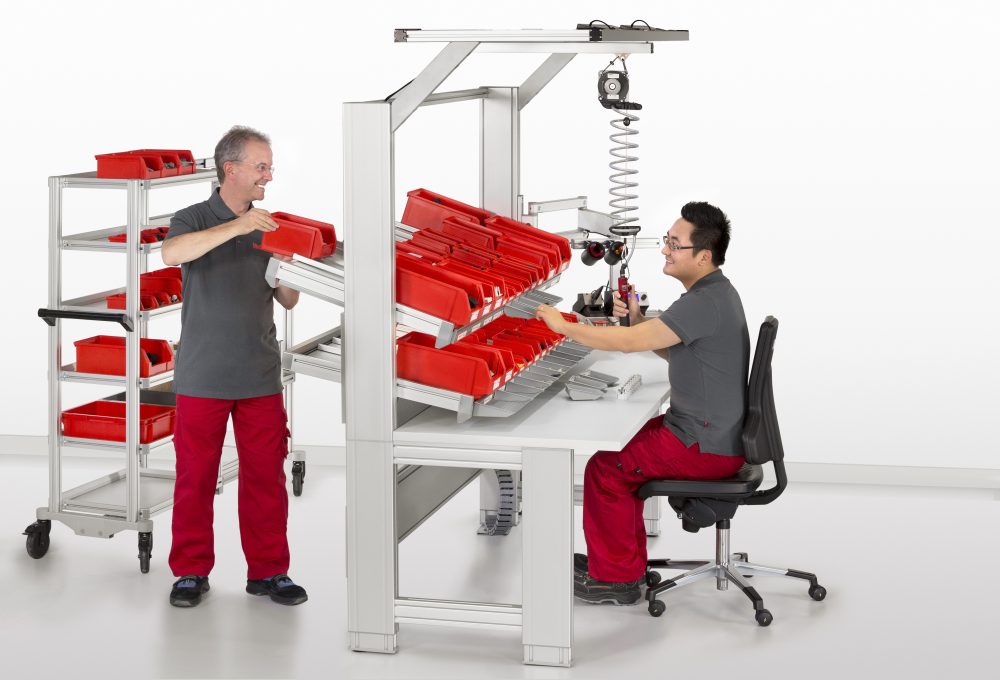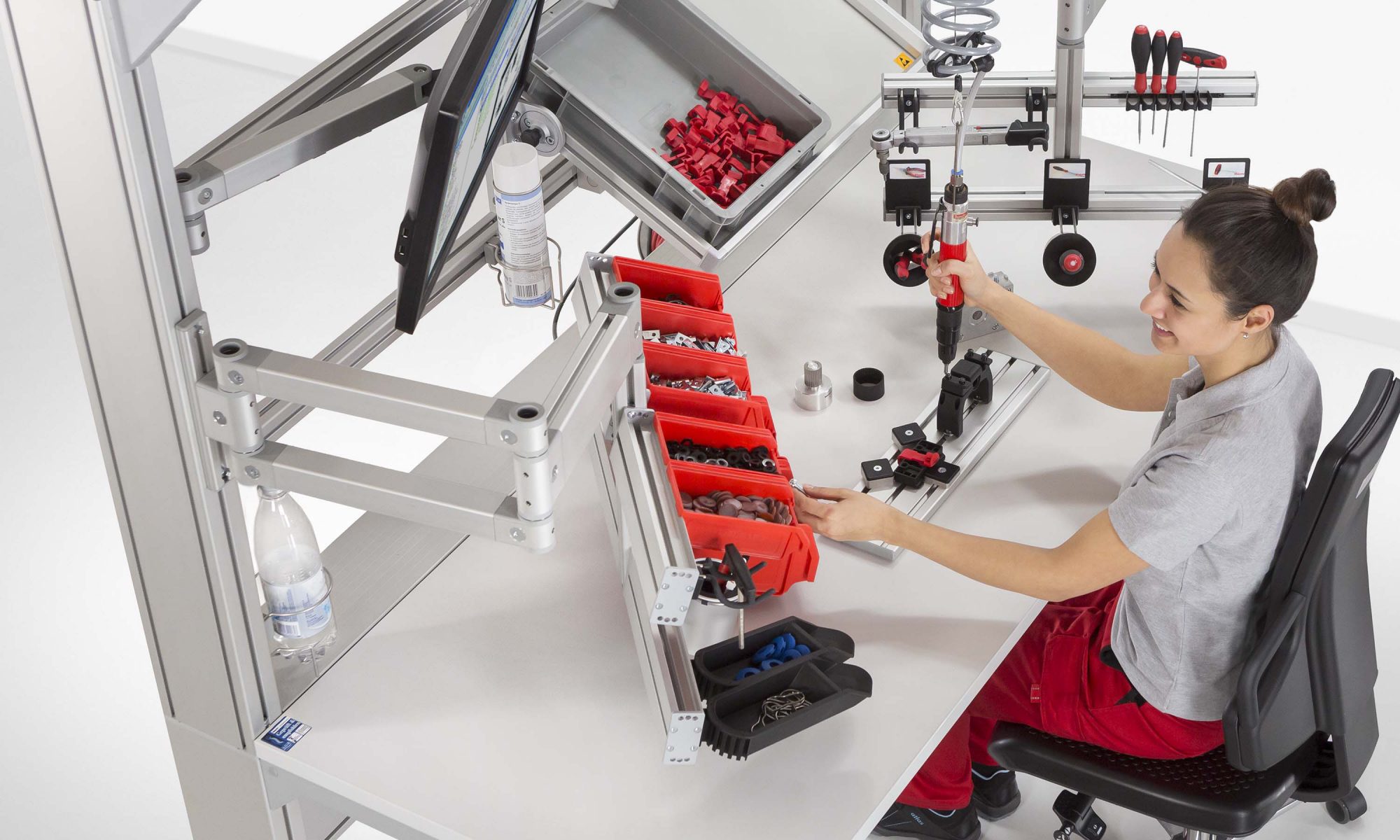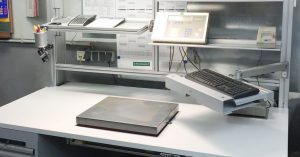Why sitting is a hazard and how to tackle it.
After looking at the topic of lighting last week, we are now turning our attention to ergonomic sitting practices in industrial environments. There are two sides to this story. The first is the simple fact that people are not designed to spend long periods of time sitting down. Although our bodies can withstand a fair amount of strain, they will sooner or later fight back against continuous pressures. And, when a work bench has not been adapted for the anatomy of the human body, those stresses and strains are very high and intensive over time.
This leads us on to the second side of the story – sitting practices should be designed to be as comfortable as possible for employees and help them maximise their efficiency.
Skilfully avoid unnecessary strain
Spending hours and hours at work in one and the same posture quickly takes its toll, often resulting in tension, if not pain. Wherever processes allow, it makes sense to change between a sitting and standing posture. A height-adjustable work bench offers particularly good opportunities to do just that. It may sound odd, but it was only 250 years ago that people first started spending long periods of time sitting down. And that is precisely why our bodies are fundamentally unaccustomed to this position. From an ergonomic perspective, when an employee has been working for a long time in a seated position, it is a good idea for him or her to switch to a standing position. This takes a great deal of strain off the back. The ideal ratio is 80 percent dynamic sitting to 20 percent standing.

Ergonomic industrial chairs

Sitting is unavoidable in most activities and that’s why it is essential that chairs follow ergonomic principles. When selecting a chair for an industrial environment, there are several points that should be considered. For example, the upholstery should be robust so that it can be cleaned down as necessary and withstand scuffs, scrapes and rough handling. The most important factor, however, is adjustability. Height adjustment comes first – when seated with your feet flat on the floor, your legs should bend at an angle of just over 90 degrees. To ensure comfortable support under the thighs, the seat should therefore be inclined forward slightly.
This means you can sit comfortably without restricting the blood flow in your legs. Ideally, the back rest should also incorporate a lumbar support. The lumbar region is the area of the spinal column that bends toward the stomach. This is the normal position of the lumbar region. However, if the surrounding muscles are weak, the spine can start to curve in the opposite direction (kyphosis).
Ergonomic sitting and relieving strain on the spinal column
Lumbar supports are integrated into the back rests of work chairs to actively counteract the poor posture associated wtih kyphosis. The back rest should include lumbar support at the correct height for the user’s lower back, a function that is extremely important to ensure an ergonomic sitting posture.
Chairs are at least as important in industrial environments as they are in the office.
A reclining tilt mechanism in the back rest that includes tension control enables dynamic sitting, which also better nourishes the spinal joints. Tilting the seat forward slightly by five degrees ensures that your pelvis is angled, which encourages an upright sitting position. Chairs are at least as important in industrial environments as they are in the office. As a consequence, they should always satisfy current ergonomic standards if they are to support efficient and healthy working practices.





